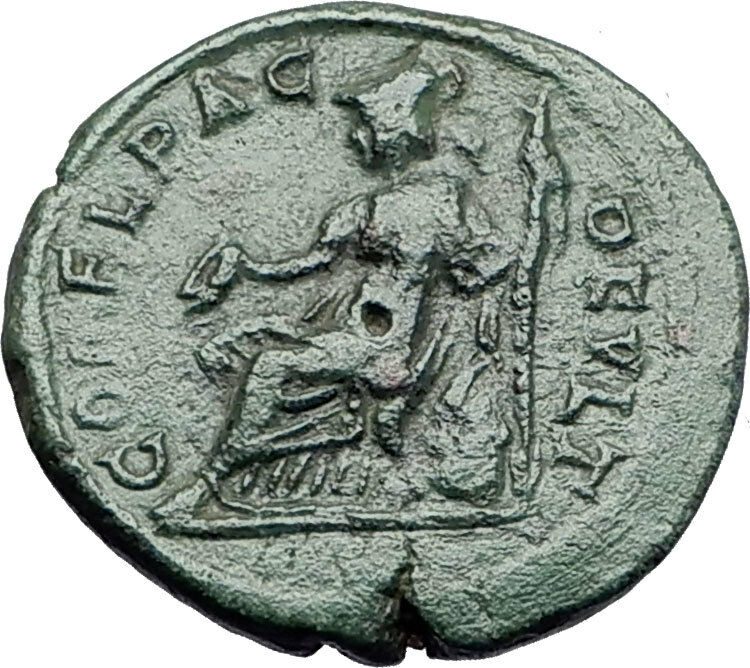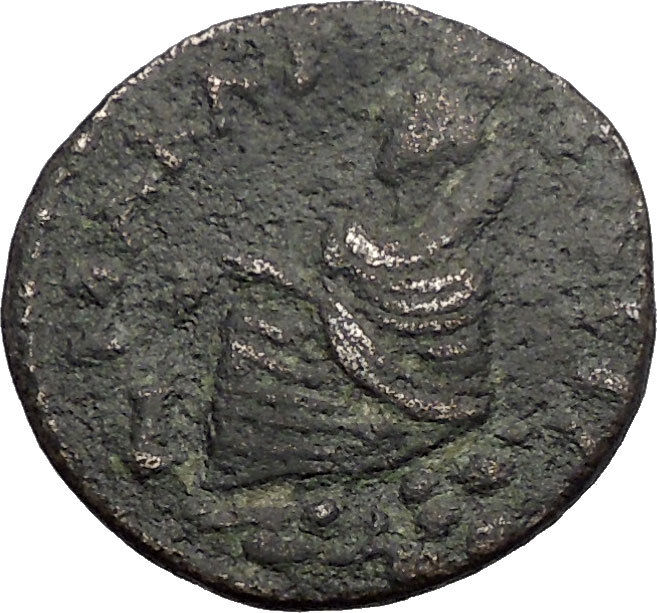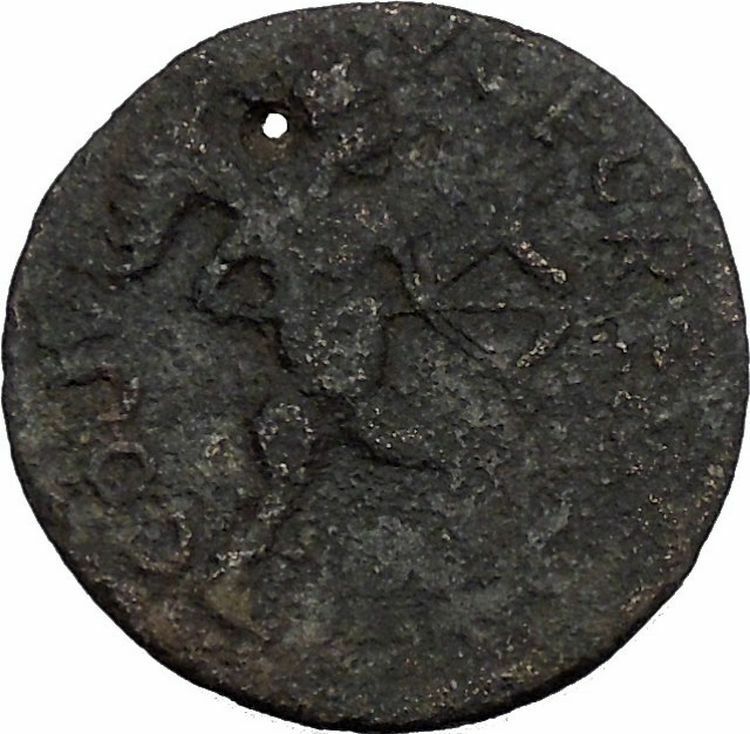|
Philip II – Caesar: 244-247 & Roman Emperor: 247-249 A.D.
Bronze
22mm (10.84 grams) of Samosata in the COMMAGENE
Reference: Butcher 33
AVTOK K M IOVΛI ΦΙΛIΠΠOC CЄB, Laureate, draped and cuirassed bust right.
CAMOCATЄΩN, Tyche seated left on rocks, holding eagle; to lower left, Pegasus springing left.
You are bidding on the exact item pictured, provided with a Certificate of Authenticity and Lifetime Guarantee of Authenticity.
 Tyche (meaning “luck”; Roman equivalent: Fortuna) was the presiding tutelary deity that governed the fortune and prosperity of a city, its destiny. She is the daughter of Aphrodite and Zeus or Hermes. Tyche (meaning “luck”; Roman equivalent: Fortuna) was the presiding tutelary deity that governed the fortune and prosperity of a city, its destiny. She is the daughter of Aphrodite and Zeus or Hermes.
In literature, she might be given various genealogies, as a daughter of Hermes and Aphrodite, or considered as one of the Oceanids, daughters of Oceanus and Tethys, or of Zeus. She was connected with Nemesis and Agathos Daimon (“good spirit”).
The Greek historian Polybius believed that when no cause can be discovered to events such as floods, droughts, frosts or even in politics, then the cause of these events may be fairly attributed to Tyche.
Worship
Increasingly during the Hellenistic period, cities venerated their own specific iconic version of Tyche, wearing a mural crown (a crown like the walls of the city).
Tyche had temples at Caesarea Maritima, Antioch, Alexandria and Constantinople. In Alexandria the Tychaeon, the temple of Tyche, was described by Libanius as one of the most magnificent of the entire Hellenistic world.
She was uniquely venerated at Itanos in Crete, as Tyche Protogeneia, linked with the Athenian Protogeneia (“firstborn”), daughter of Erechtheus, whose self-sacrifice saved the city.
Stylianos Spyridakis concisely expressed Tyche’s appeal in a Hellenistic world of arbitrary violence and unmeaning reverses: “In the turbulent years of the Epigoni of Alexander, an awareness of the instability of human affairs led people to believe that Tyche, the blind mistress of Fortune, governed mankind with an inconstancy which explained the vicissitudes of the time.”
Depictions
Tyche appears on many coins of the Hellenistic period in the three centuries before the Christian era, especially from cities in the Aegean. Unpredictable turns of fortune drive the complicated plotlines of Hellenistic romances, such as Leucippe and Clitophon or Daphnis and Chloe. She experienced a resurgence in another era of uneasy change, the final days of publicly sanctioned Paganism, between the late-fourth-century emperors Julian and Theodosius I who definitively closed the temples. The effectiveness of her capricious power even achieved respectability in philosophical circles during that generation, though among poets it was a commonplace to revile her for a fickle harlot.
In medieval art, she was depicted as carrying a cornucopia, an emblematic ship’s rudder, and the wheel of fortune, or she may stand on the wheel, presiding over the entire circle of fate.
The constellation of Virgo is sometimes identified as the heavenly figure of Tyche, as well as other goddesses such as Demeter and Astraea.
 Philip II – 247-249 A.D. Philip II – 247-249 A.D.
Caesar: 244-247 A.D. (under Philip I) | Augustus: 247-249 A.D. (with Philip I)
Son of Philip I ‘The Arab’ and Otacilia Severa | Grandson of Julius Marinus
Marcus Julius Philippus Severus, also known as Philippus II, Philip II and Philip the Younger (238-249) was the son and heir of the Roman Emperor Philip the Arab by his wife Roman Empress Marcia Otacilia Severa. According to numismatic evidence, he had a sister called Julia Severa or Severina, whom the ancient Roman sources do not mention.
When his father became emperor in 244 he was appointed Caesar. Philippus was consul in 247 and 248. His father was killed in battle by his successor Decius in 249. When news of this death reached Rome, he was murdered by the Praetorian Guard. He died in his mother’s arms. When he died, he was eleven years old.
|





 Tyche (meaning “luck”; Roman equivalent: Fortuna) was the presiding tutelary deity that governed the fortune and prosperity of a city, its destiny. She is the daughter of Aphrodite and Zeus or Hermes.
Tyche (meaning “luck”; Roman equivalent: Fortuna) was the presiding tutelary deity that governed the fortune and prosperity of a city, its destiny. She is the daughter of Aphrodite and Zeus or Hermes. Philip II – 247-249 A.D.
Philip II – 247-249 A.D.




